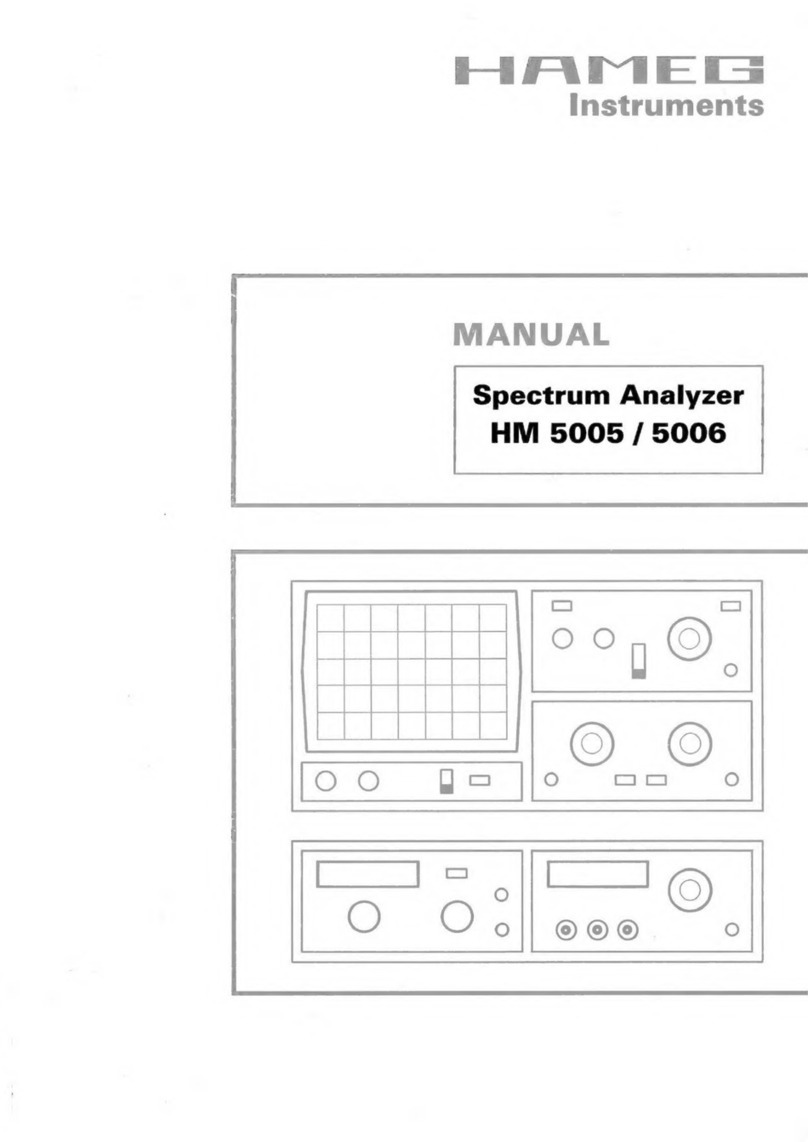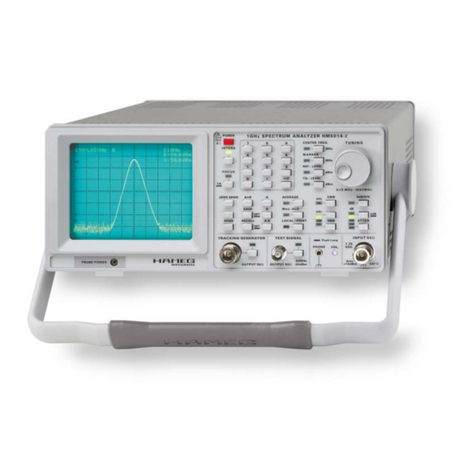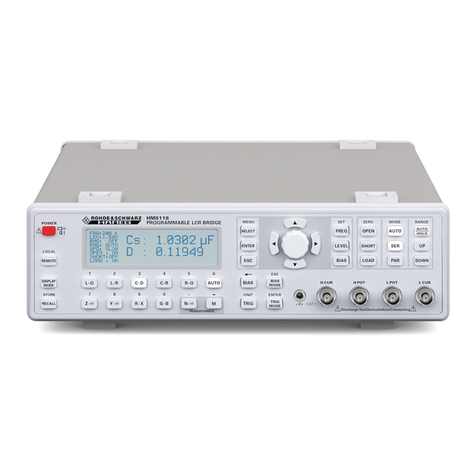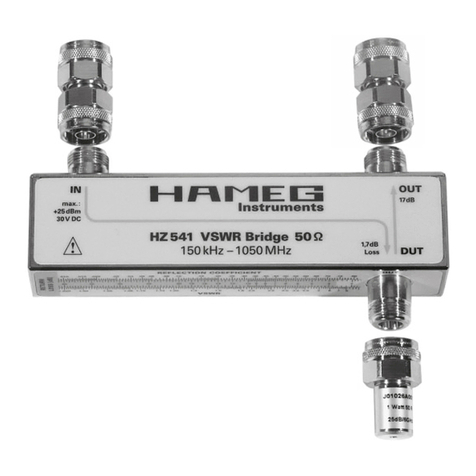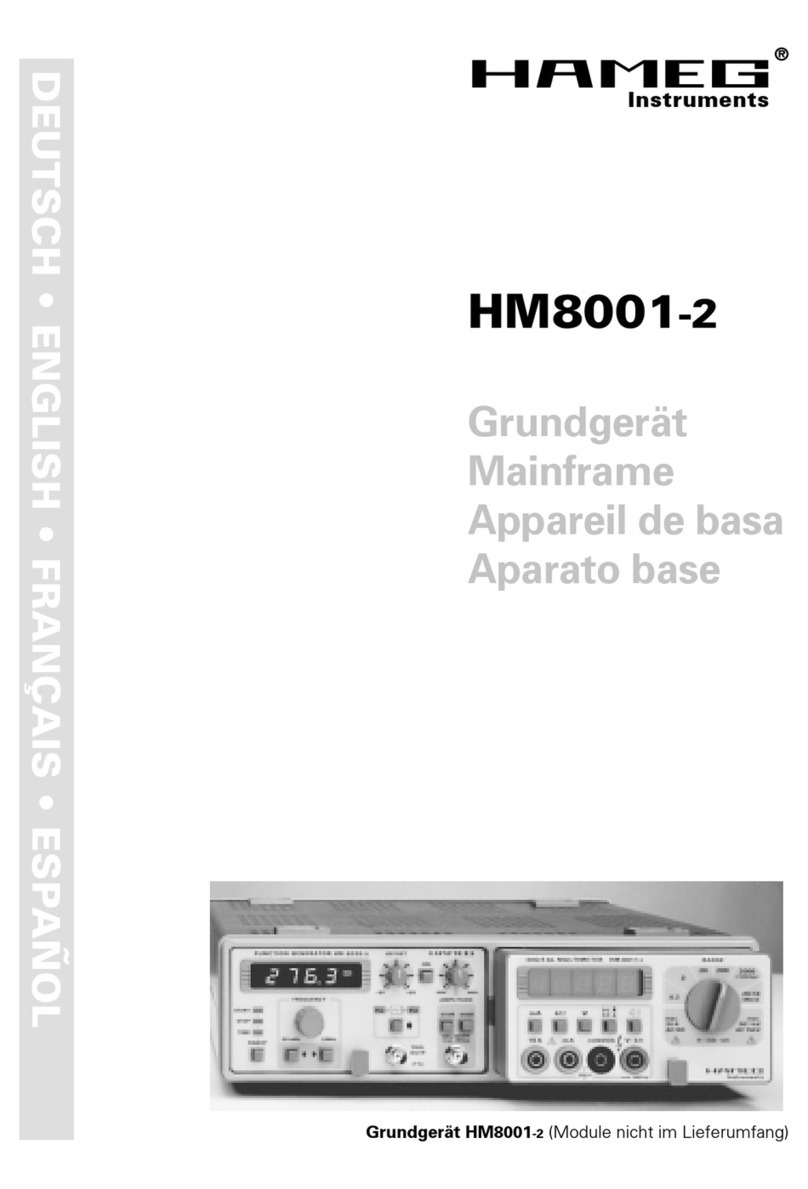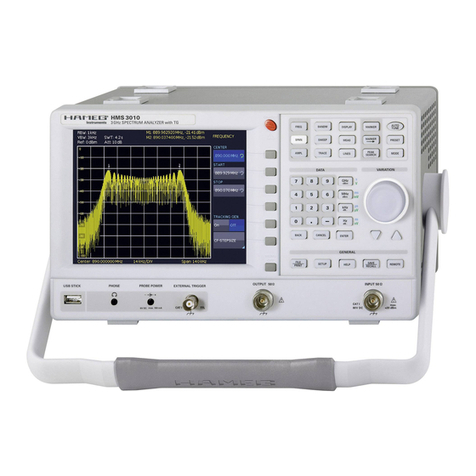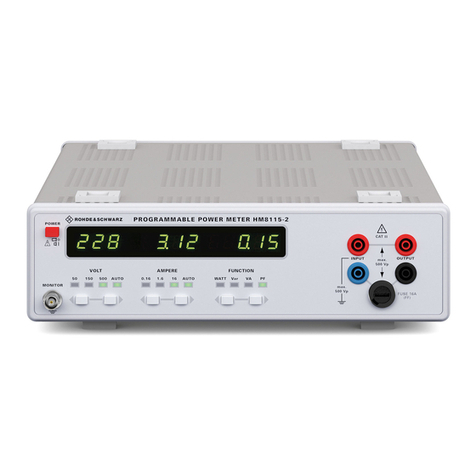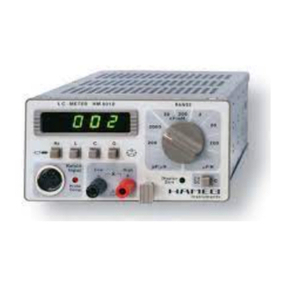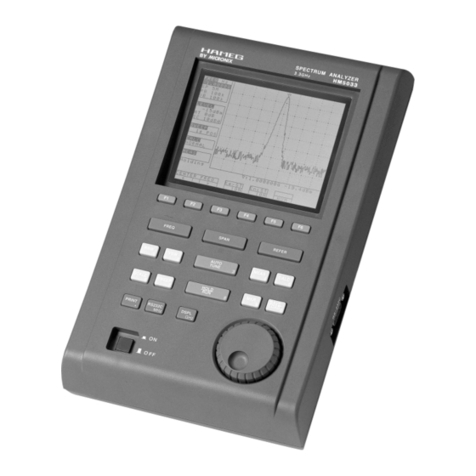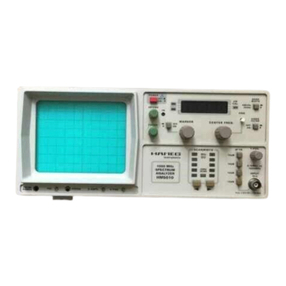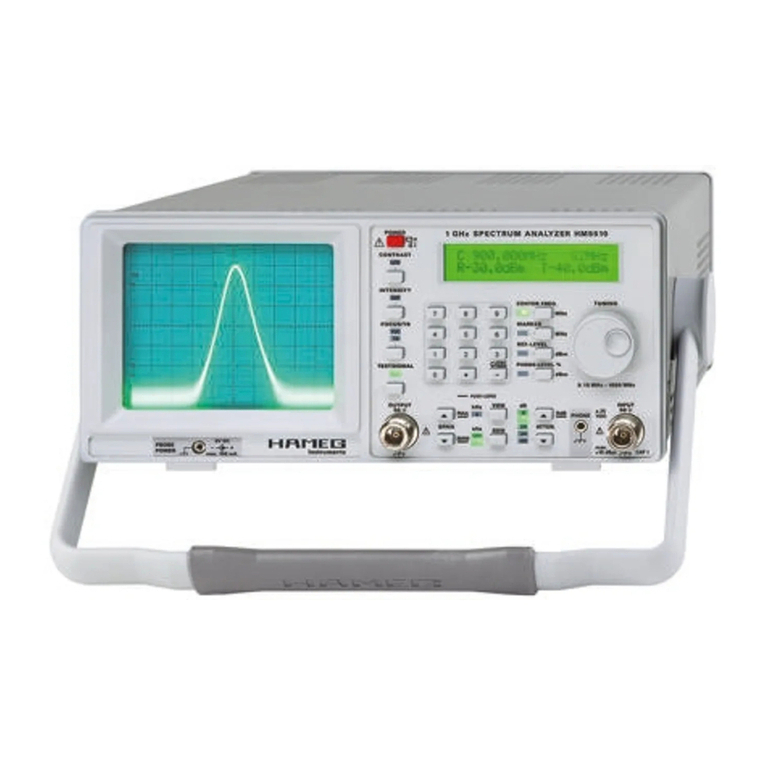
10 Subject to change without notice
HZ530 EMI Near Field Sniffer Probe Set (Optional accessories)
The HZ530 is the ideal toolkit for the
investigation of RF electromagnetic fields.
It is indispensible for EMI pre-compliance
testing during product development, prior
to third party testing. The set includes 3
hand-held probes with a built-in pre-
amplifier covering the frequency range from
10 kHz to 1000 MHz depending on probe
type. The set includes one magnetic field
probe, one electric field probe and one
high impedance probe. All have high
sensitivity and are matched to the 50Ω
inputs of spectrum analyzers. The power
can be supplied either from the batteries or
thrugh a power cord directly connected to
an HM5012/14 series spectrum analyzer.
Signal feed is via a 1.5m BNC-cable. When
used in conjunction with a spectrum analyzer
or a measuring receiver, the probes can be
used to locate and qualify EMI sources.
They are especially suited to locate
emission “hot spots” on PCBs and cables,
as well as evaluate EMC problems at the
breadboard and prototype level. They
enable the user to evaluate radiated fields
and perform shieldeffectivitycomparisons.
Mechanical screening performance and
immunity tests on cables and components
are easily performed. Faulty components
and poorbonding locationscan be isolated.
The magneticprobe incorporates a high
degree of rejection of both stray and direct
electric fields, and provides far greater
Specifications
Frequency
Frequency range: 0.1MHz to 1000MHz
(lower frequency limit
depends on probe type)
Output impedance: 50 Ω
Output connector: BNC-jack
Input capacitance: 2pF
(high imped. probe)
Max. Input Level: +10dBm
(without destruction)
1dB-compression point: -2dBm
(frequency range dependent)
DC-input voltage: 20V max.
Supply Voltage: 6V DC
4 AA size batteries
Supply-power of HM5012/5014
Supply Current: 8mA (H-Field Probe)
15mA (E-FieldProbe)
24mA(High imp.Probe)
Probe Dimensions:
40x19x195mm
(WxDxL)
Housing: Plastic; (electrically
shielded internally)
Package contents: Carrying case
1 H-Field Probe
1 E-Field Probe
1 High Impedance Probe
1 BNC cable (1.5m)
1 Power Supply Cable
(Batteries or Ni-Cads are not included)
repeatability than with conventional field
probes. Measurements can be made on the
very near field area that is close to compo-
nents or radiation sources. The electric field
(mono-pole) probe has the highest
sensitivity of all three probes. It can be
used to check screening and perform pre-
compliance testing on a comparative basis.
The high impedance probe is used to
measure directly on the components
under test or at the conductive trace of a PC
board. It has an input capacitance of only
2pF and supplies virtually no electrical
charge to the device under test.












